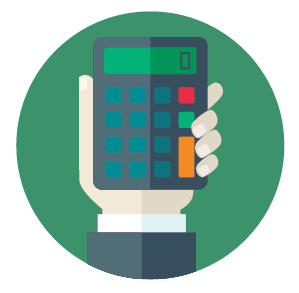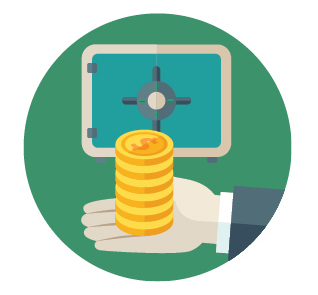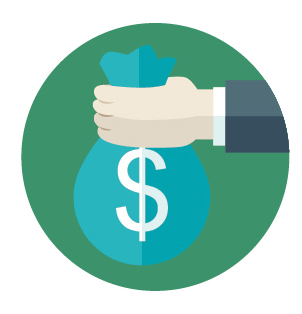One week last November, I had issued over $40,000 in invoices but had only $2,000 in my business bank account.
Despite careful budgeting, cash cushion building and prompt invoicing, my due diligence was not enough to avoid the squeeze of solopreneurship. For members of the YouEconomy, the ebb and flow of getting paid can be a burden.
Everything from past-due payments to seasonal slowdowns can result in unexpected cash flow interruptions. Cycles of feast or famine can perpetuate the stress of paycheck-to-paycheck living.
To survive and thrive in the midst of this volatility, the adage “expect the unexpected” is a mandate. After all, the rent is still due. It doesn’t matter how many thousands of dollars are on the way if none of them are in your bank account when it comes time to pay your quarterly tax bill.
Related: Everything You Need to Know About the YouEconomy
Here are four ways solopreneurs can begin creating a framework for financial security, even without salary certainty.
 1. Calculate your make-or-break number.
1. Calculate your make-or-break number.
What is the bare minimum, no frills cost of running your business and your life? Add to that a buffer of 10 percent and a retirement savings contribution to get your make-or-break number: a benchmark for the viability of your venture.
When you have a clear metric for covering your basic operational costs, it offers a threshold for how much you need to earn as well as a gauge for other spending, savings and reinvestment goals.
Subtract your make-or-break number from your previous month’s income to calculate how much you can afford to spend on discretionary expenses.
 2. Don’t mix business and personal accounts.
2. Don’t mix business and personal accounts.
For the novice freelance writer or part-time TaskRabbit, making a couple of hundred bucks on the side might not feel like much of a business. But it should still be treated as such. Set up separate business accounts to keep self-employment or side-hustle income and expenses separate from personal ones.
In addition to simplifying accounting come tax time, this separation can help cultivate a critical solopreneur mindset: Revenue does not equal income!
 3. Build a buffer.
3. Build a buffer.
Expecting the unexpected requires a healthy cash cushion for managing cash flow interruptions—separate from personal emergency savings.
While building this business savings buffer, solopreneurs should also look ahead for potential business slowdowns and put backup plans in place. Instead of scrambling after a few weeks without work, proactively seeking new opportunities prior to a breaking point can help avoid overreliance on the emergency business buffer.
 4. Be your own human resources department.
4. Be your own human resources department.
Switching over to self-employment also means becoming self-reliant. With no HR department to set up your health care or employer to match your 401(k) contributions, solopreneurs have to take the reins of their own long-term well-being, and treat it as seriously as any other aspect of their business.
I include retirement contributions in my make-or-break number to ensure they become as nonnegotiable as any other essential living cost. After all, the only way to thrive in the YouEconomy is to take the long view and plan accordingly.
Related: Do You Have What It Takes to Be a Part of the YouEconomy?
This article originally appeared in the June 2017 issue of SUCCESS magazine.










